 Today I traveled to Webberville County Park for a first hand look at nesting habitat of a Prothonotary Warbler along the Colorado River. I was following up on a Texbirds report by Cullen Hanks of a nesting Prothonotary Warbler at the boat dock. This park has lots of tall Hackberry, Pecan, Cedar Elm, and Box Elder trees, including an abundance of Poison Ivy shrubs and vines. The trees and shrubs form a dense corridor of forest along the rivers edge. I began my search 9:30 A.M. looking over the sign posts, where the bird was reportedly nesting in the vicinity of the boat launch. I soon found out the young had already fledged the nest. I discovered the adult male actively singing NE of the boat launch site up until the time I left at 12 noon.
Today I traveled to Webberville County Park for a first hand look at nesting habitat of a Prothonotary Warbler along the Colorado River. I was following up on a Texbirds report by Cullen Hanks of a nesting Prothonotary Warbler at the boat dock. This park has lots of tall Hackberry, Pecan, Cedar Elm, and Box Elder trees, including an abundance of Poison Ivy shrubs and vines. The trees and shrubs form a dense corridor of forest along the rivers edge. I began my search 9:30 A.M. looking over the sign posts, where the bird was reportedly nesting in the vicinity of the boat launch. I soon found out the young had already fledged the nest. I discovered the adult male actively singing NE of the boat launch site up until the time I left at 12 noon. 
After about an hour of hearing the bird and only two glimpses of it flying across the river, I finally decided to hike into the forest, into the dense poison ivy underbrush, where I watched the male 25' away along the rivers edge. I observed this bird for an hour preen, sun its black tipped tail feathers, and feed itself and one fledgling, all within 15' of the ground and the waters edge.
Now that I have first hand evidence of Prothonotary Warbler habitat in central Texas I can say there is slim probability this species will nest along the Pedernales River in Pedernales Falls State Park. However, the data I am collecting falls into the category of a Breeding Bird Census which I intend to continue in 2009. I will also continue monitoring the nest boxes.
I will also continue monitoring the nest boxes.
 I will also continue monitoring the nest boxes.
I will also continue monitoring the nest boxes.This year all ten nest boxes I put up at Pedernales Falls State Park, did not attract a single avian nester. However, at my home in Oak Hill I did have a Bewick's Wren nest with a 1-1/4" diameter opening similar to the nest boxes at the park. After contacting Chuck Jones, sanctuary manager at the Heard Wildlife Sanctuary, where a Prothonotary successfully nested last year, I learned the nest box opening should be 1-1/2" not the 1-1/4" I designed for.
So next year I plan to change the cavity entrance to 1-1/2" on all ten nest boxes. The only downfall for providing a larger entrance is this will allow the Brown-headed Cowbird to enter and lay its eggs. This years surveys I have reported the presence of cowbirds at all nest box locations.
To better identify this research project I will be changing the name of my blog site in 2009 to Pedernales BBC, (Breeding Bird Census) or something similar. Some of the nest boxes I intend to relocate lower to the river. If you have suggestions regarding this study please contact me at andres.susan@gmail.com.
Photos provided are of the sign posts at Webberville County Park. At this time I am not sure which post the Prothonotary Warbler actually nested in. All the posts have no cap on the top of the pole which is apparently where the bird entered and built its nest.

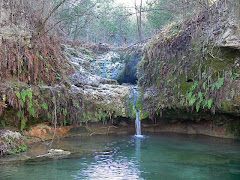
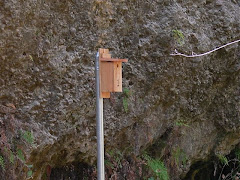
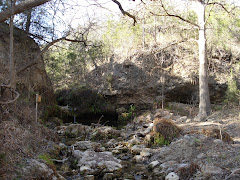
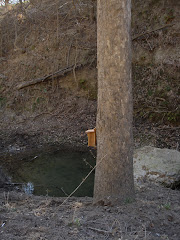
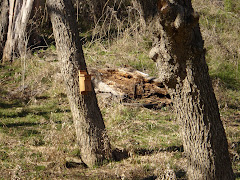




No comments:
Post a Comment